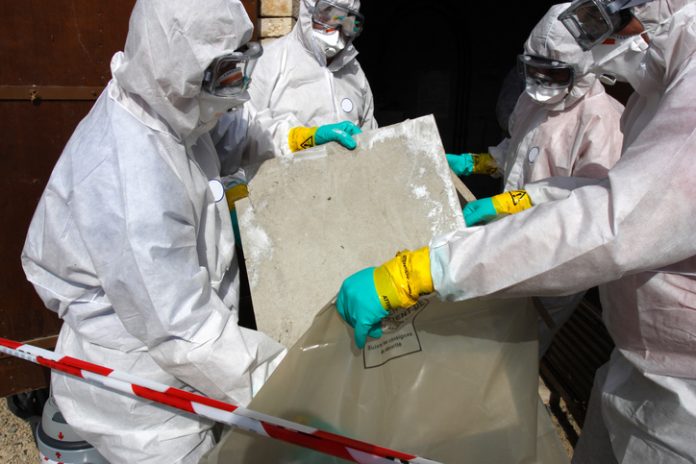Arguably the most notorious construction material ever devised, asbestos was rolled out extensively in buildings of all kinds from the 19th century onwards. It wasn’t until after this rollout that the material’s carcinogenic properties were discovered, and a ban was eventually put in place.
Despite this, asbestos remains present in millions of buildings around the UK, and thus when it’s discovered, it’s important that precautions are taken to minimise exposure.
What is Asbestos?
Asbestos is a kind of rock that naturally comes in long strands, or fibres. When inhaled, it can cause permanent scarring of the inside of the lungs, and to a thickening of the membrane in which the lungs are housed. Both of these issues will reliably cause breathing difficulty.
Asbestos can also cause fatal cancer, both of the lungs themselves, and of the lung lining (mesothelioma). According to the HSE, around two-thirds of cancer deaths in the construction industry are a result of exposure to asbestos.
The dangerous thing about asbestos exposure is that the symptoms often take years to manifest, and thus one might be exposed without knowing it. The asbestos fibres can’t be smelled or seen, but they can do their damage nonetheless.
Can I claim for Asbestos?
If the presence of asbestos has affected your health, then you might be entitled to legal compensation. Asbestos claims are usually undertaken on a no-win, no-fee basis, so it’s always worth asking the question.
What kinds of Asbestos are there?
Asbestos comes in three different types: blue (crocidolite), brown (amosite) and white (chrysolite). Learning to recognise all three by sight will help you to avoid danger by taking action earlier.
Do Facemasks work?
When you’re dealing with asbestos, it’s important that your airways are protected. This means wearing a mask whose filters are fine enough to exclude all of those airborne fibres. Masks of this kind will be advertised as such. Wear them properly, and make sure you’ve done your research. Asbestos removal is not a job for amateurs – so don’t attempt it unless you know what you’re doing.
What should I do if I discover asbestos?
The use of asbestos as an insulating material was widespread from the 1950s until the early 1990s. The good news is that most of this material is trapped inside panels and between floors, where the fibres cannot be inhaled.
If the fibres are disturbed, however, then the danger becomes considerable. You might do this by sawing or drilling through a ceiling.
If you’re the owner of a non-domestic property, then you are duty-bound to record and report the presence of asbestos. It’s vital that you are pro-active, rather than waiting for asbestos to be discovered. Try to obtain as much information as possible from previous owners and equipment suppliers, and then call for an inspection.
Disclaimer: This article contains sponsored marketing content. It is intended for promotional purposes and should not be considered as an endorsement or recommendation by our website. Readers are encouraged to conduct their own research and exercise their own judgment before making any decisions based on the information provided in this article.


































